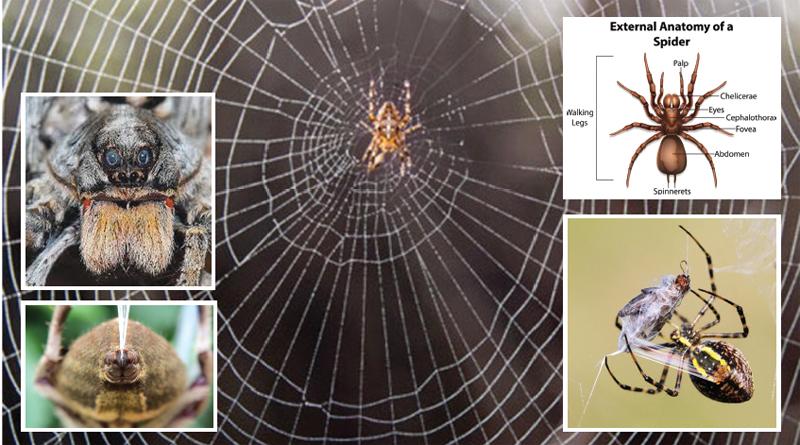
A Cobweb is the network of silken threads spread by a spider. We can call it the spider-web too.
Spider
The spider is an eight-legged arthropod. It has fangs generally able to inject venom. Spiders are venomous as they weave the spider net to catch their prey and venom is the trick of making their food out of the prey. Spiders have spinnerets that extrude silk.
The spinnerets
A spinneret is the organ used by spiders to produce silk. Not only spiders but also the other insects or the caterpillars of butterflies and moths also have spinnerets at the end of their body. They produce thread for their cocoon. Spinnerets are tubular or conical structures. They produce silk as a liquid at the tip of the spinnerets.
Chemistry of a cobweb
A cobweb is made of spider silks which are a protein fibre. It has acids like alanine, glycine, serine, and praline. Glycine provides the elasticity to the cobweb. The strongest cobweb in the world can bear a stress more than average steel can do.
Proteins are made of abundant elements such as carbon, hydrogen, oxygen and nitrogen. Water is the only by-product in producing cobwebs. Natural materials such as spider silk, which is made from protein is “environmentally friendly”, because they use less energy and abundant elements, making the processing materials better than now-a-days engineering materials.
a cobweb is a wonder of nature.
The cobweb and the spider web
Cobwebs are spider webs. When the spider web is fresh and sticky, it attracts preys. This freshness may last up to a few weeks.
This depends upon the type of the spider. Once the freshness and the moisture are lost, the spider starts weaving the next spider web.
Spider webs are not only built in dark corners. They are also done to catch insects that fly in open areas and gardens.
Catching the prey
Spider webs are designed to catch their food. Spiders do not have great sight. When small insects are stuck the web vibrates.
When the spider feels the vibrations of the web they follow the path to locate their prey.
Then the spider runs to the prey on the spider web and wrap their prey in silk, turning it around and around until it is fully covered. Then the spider injects venom into the prey to make it unconscious.
Cleaning cobwebs at home
Vacuuming is the best and environmentally friendly way to clean cobwebs. We should clean the dark corners and behind the furniture to make sure that our home is free from cobwebs.
If we do not have a vacuum cleaner, we can dilute bleaching powder in water in a spray bottle, spray it and wipe off with a dry cloth.
Remember to cover your nose and mouth before you clean dusty places with cobwebs.
Pahanma Liyanage
Grade 6-A
Lyceum International School
Nugegoda
